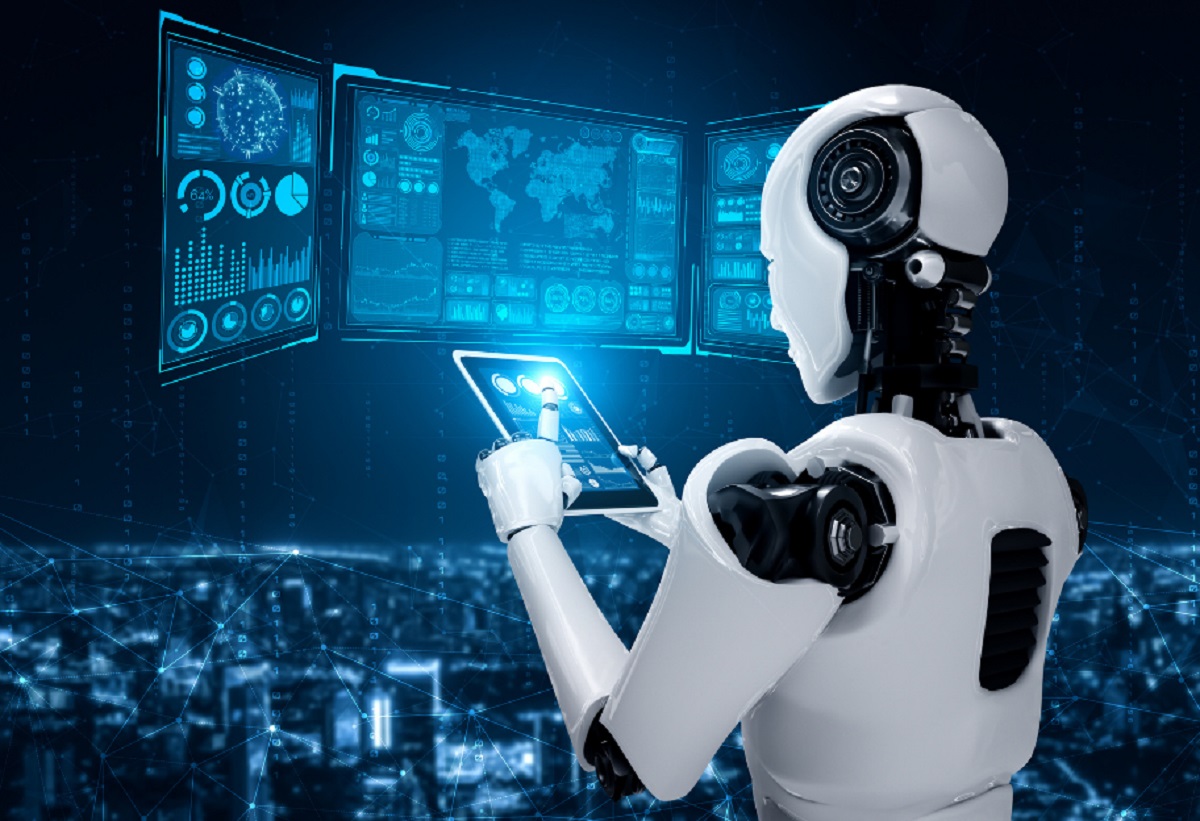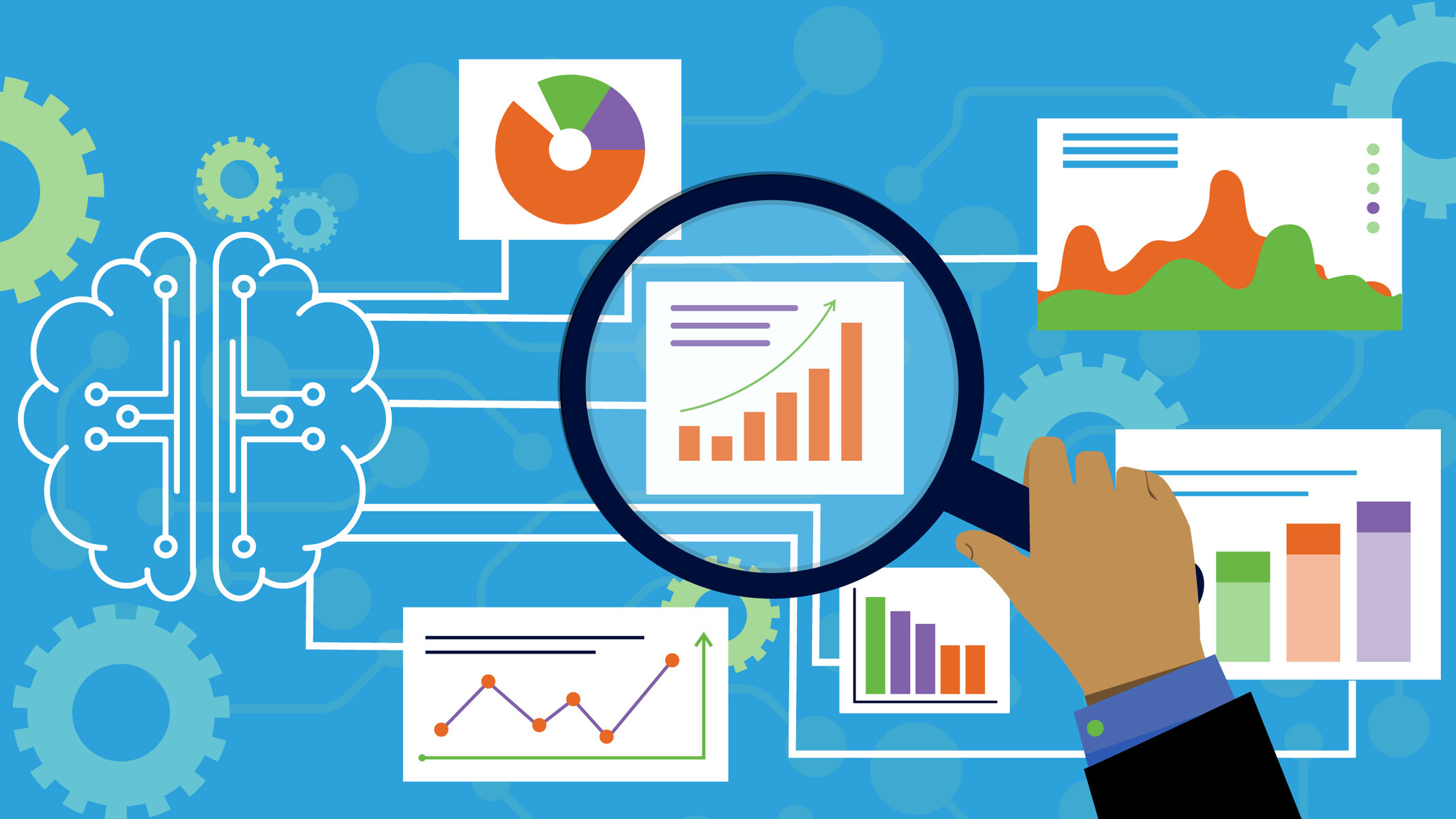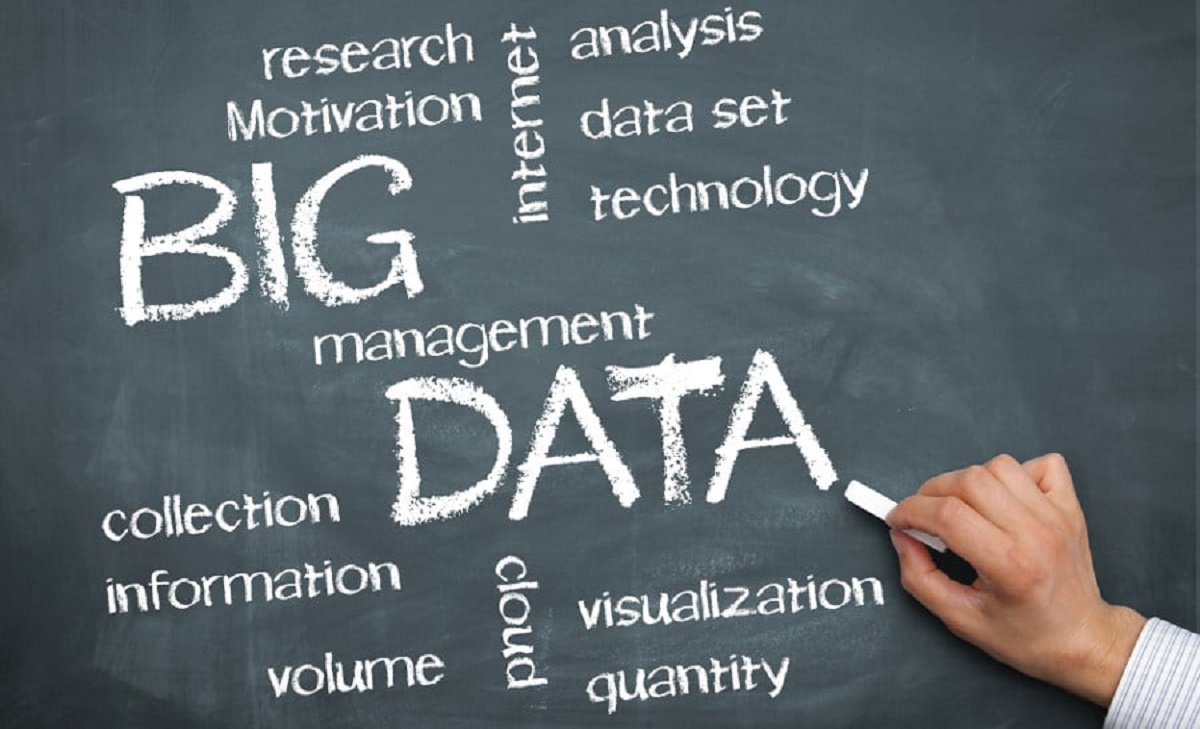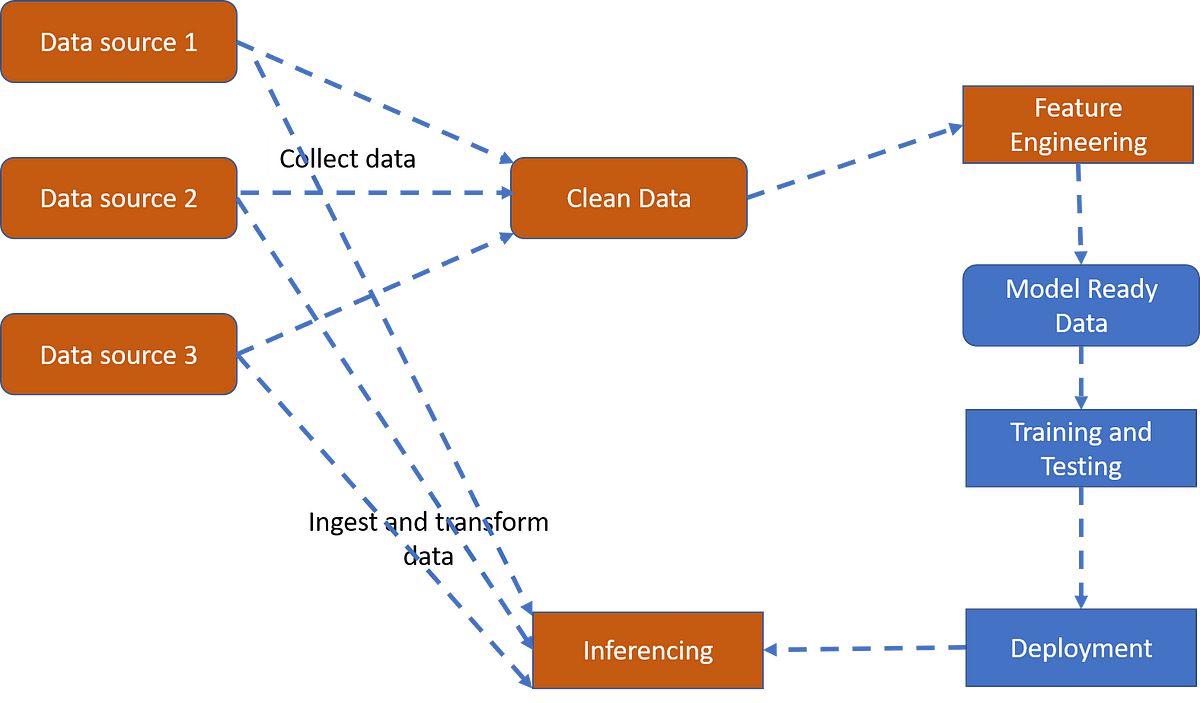Introduction
Welcome to the world of big data and machine learning! In today’s digital age, the amount of data being generated and collected is growing at an exponential rate. This enormous volume of data, known as big data, has the potential to revolutionize industries and transform the way we make decisions. At the same time, machine learning algorithms are becoming increasingly sophisticated, enabling us to analyze and extract valuable insights from this vast amount of data.
So, what exactly is big data? Big data refers to the large and complex sets of data that cannot be easily managed, processed, or analyzed using traditional data processing methods. It encompasses data from various sources, including social media, sensors, transactions, and more. The sheer volume, variety, and velocity of big data present unique challenges and opportunities for businesses and organizations.
On the other hand, machine learning is a subset of artificial intelligence that utilizes algorithms to enable computers to learn and make predictions or decisions without being explicitly programmed. It leverages the power of statistical modeling and computational techniques to recognize patterns and uncover hidden insights from big data. Machine learning algorithms can be trained on vast amounts of data to improve accuracy and efficiency over time.
Big data and machine learning go hand in hand. Big data provides the fuel, while machine learning provides the tools to extract actionable insights from that data. The combination of these two powerful technologies has the potential to transform industries such as healthcare, finance, marketing, and more.
In this article, we will explore the characteristics of big data, delve into the different types of machine learning, discuss the algorithms used in machine learning, examine the relationship between big data and machine learning, explore their applications, and address the challenges associated with utilizing these technologies.
So, join us on this exciting journey as we uncover the world of big data and machine learning and discover how they are reshaping the landscape of data-driven decision making.
What is Big Data?
Big data refers to massive volumes of structured, unstructured, and semi-structured data that are too vast and complex to be processed using traditional data processing methods. It encompasses data from various sources, including social media, IoT devices, online transactions, sensor data, and more. The three defining characteristics of big data are volume, variety, and velocity.
The volume of big data refers to the sheer quantity of data being generated and collected. With the proliferation of internet-connected devices and the digitization of information, data is being produced at an unprecedented rate. Every second, massive amounts of data are generated, creating a data deluge that presents both challenges and opportunities for organizations.
Another crucial aspect of big data is variety. It encompasses structured data, such as relational databases, as well as unstructured data, such as text documents, images, videos, and social media posts. Moreover, big data includes semi-structured data, like JSON files, which contain elements of both structure and flexibility. The wide range of data types poses challenges in terms of storage, processing, and analysis.
Velocity is the speed at which data is generated, collected, and processed. In today’s fast-paced world, data is being generated in real-time or near real-time. This velocity of data requires organizations to implement agile and scalable systems to collect, process, and analyze the data in a timely manner. Timely insights from fast-moving data are crucial for decision-making processes.
The value of big data lies in its potential to yield valuable insights that can drive informed decision-making and business growth. By analyzing large volumes of data, organizations can uncover patterns, trends, and relationships that were previously hidden. These insights can provide businesses with a competitive edge, enable more accurate predictions, and fuel data-driven strategies.
Big data is revolutionizing various industries. In healthcare, it enables the analysis of patient data to improve diagnoses, identify treatment options, and enhance personalized medicine. In finance, big data is utilized for fraud detection, risk assessment, and algorithmic trading. In marketing, it enables targeted advertising, customer segmentation, and personalized experiences.
To harness the potential of big data, organizations employ various technologies, tools, and techniques. This includes data storage systems like Hadoop and Apache Spark, data processing frameworks, and machine learning algorithms. With the right infrastructure and expertise, organizations can turn the deluge of big data into a valuable asset.
Characteristics of Big Data
Big data is characterized by several key attributes that set it apart from traditional data sets. Understanding these characteristics is essential for effectively managing, analyzing, and deriving value from big data.
The first characteristic of big data is volume. As the name suggests, big data refers to massive volumes of data. It encompasses terabytes, petabytes, or even exabytes of information. This sheer volume presents challenges in terms of storage, processing, and analysis. Organizations need robust infrastructure and storage systems to handle and process such enormous data sets.
The second characteristic is variety. Big data comes in various formats and types, including structured, unstructured, and semi-structured data. Structured data refers to data that is organized and can be easily defined, such as data in relational databases. Unstructured data, on the other hand, lacks a predefined structure and includes text documents, emails, social media posts, images, videos, and more. Semi-structured data falls in between, containing some level of organization but also flexibility. Handling diverse data types requires specialized tools and techniques to extract meaningful insights.
The next characteristic is velocity, which refers to the speed at which data is generated and processed. With the advent of the internet, social media, IoT devices, and real-time data streaming, data is being generated at an unprecedented velocity. Organizations must be able to capture, process, and analyze this fast-moving data to make timely decisions and gain a competitive advantage.
Big data also exhibits the trait of variability. Variability refers to the inconsistency and unpredictability in the data. This can occur due to changes in data sources, data formats, or data quality. Variability poses challenges in terms of data integration, cleaning, and ensuring data quality for accurate analysis.
The final characteristic is veracity, which pertains to the accuracy and reliability of the data. Big data can come from various sources, and ensuring the integrity of the data is essential for making informed decisions. Data verification, validation, and cleansing processes are necessary to deal with inaccuracies, biases, and discrepancies in the data.
These characteristics, collectively known as the 5 Vs (volume, variety, velocity, variability, veracity), make big data unique and challenging to manage. However, they also present immense opportunities for organizations that can harness the potential of big data. By leveraging advanced technologies, analytics tools, and machine learning algorithms, organizations can extract valuable insights and drive innovation.
Importance of Big Data
Big data has emerged as a game-changer in today’s data-driven world. It holds immense importance across various industries and sectors, enabling organizations to uncover valuable insights and make informed decisions. Let’s explore the key reasons why big data is so crucial:
1. Improved decision-making: Big data provides organizations with access to vast amounts of information that can be analyzed and processed to extract actionable insights. By analyzing patterns, trends, and correlations within the data, organizations can make data-driven decisions that are more accurate, informed, and aligned with their objectives.
2. Enhanced customer experiences: Big data allows organizations to gain a deeper understanding of their customers. By analyzing customer data, organizations can uncover preferences, behaviors, and expectations. This enables personalized marketing campaigns, targeted advertising, and improved customer service, ultimately leading to enhanced customer experiences and increased customer satisfaction.
3. Innovation and competitiveness: Big data has the potential to drive innovation by identifying new trends, market opportunities, and customer demands. By analyzing large and diverse data sets, organizations can uncover insights that can fuel product development, process improvements, and business strategies. This helps organizations stay ahead of the competition and adapt to changing market dynamics.
4. Cost optimization and efficiency: Big data analytics can help organizations identify areas of inefficiency, resource wastage, and cost savings. By analyzing operational data, organizations can optimize processes, streamline workflows, and reduce expenses. This can lead to improved operational efficiency, increased productivity, and higher profitability.
5. Risk management and fraud detection: Big data analytics plays a crucial role in risk management and fraud detection. By analyzing large volumes of data, organizations can identify patterns, anomalies, and potential risks. This enables proactive risk mitigation, early fraud detection, and enhanced security measures. Industries such as finance, insurance, and cybersecurity heavily rely on big data analytics for risk assessment and mitigation.
6. Healthcare advancements: Big data has the potential to revolutionize the healthcare industry. By analyzing patient data, clinical trials, and medical records, organizations can identify patterns, create predictive models, and develop personalized treatment plans. Big data analytics in healthcare can lead to improved diagnoses, more effective treatments, and better patient outcomes.
7. Social and humanitarian impact: Big data can be harnessed for social good and humanitarian purposes. By analyzing social media data, sensor data, and other public data sources, organizations can understand and respond to social issues, natural disasters, and public health crises more effectively. Big data analytics can aid in disaster response, resource allocation, and predictive modeling for humanitarian efforts.
The importance of big data cannot be understated in the increasingly data-driven world we live in. It empowers organizations to make better decisions, improve customer experiences, drive innovation, optimize operations, manage risks, advance healthcare, and make a positive impact on society.
What is Machine Learning?
Machine learning is a subset of artificial intelligence that focuses on developing algorithms and models that enable computers to learn from data and make predictions or decisions without being explicitly programmed. It involves the use of statistical techniques, computational algorithms, and pattern recognition to enable algorithms to learn and improve from experience.
At its core, machine learning is about extracting insights and knowledge from data. It involves training algorithms on a large amount of data to recognize patterns, relationships, and correlations. This training process allows the algorithm to generalize and make predictions or decisions on new, unseen data.
There are several types of machine learning algorithms, each with its own approach and characteristics. Supervised learning is one common type, where the algorithm is trained on labeled data, with input-output pairs provided for learning. Unsupervised learning, on the other hand, involves training algorithms on unlabeled data to discover hidden patterns or relationships within the data. There are also semi-supervised and reinforcement learning algorithms, which combine aspects of both supervised and unsupervised learning.
Machine learning algorithms rely on several key concepts and techniques. Feature selection and extraction involve identifying the most relevant features or variables in the data to improve model performance. Model evaluation and validation techniques, such as cross-validation, help assess the performance and generalization capabilities of the trained model. Regularization techniques can prevent overfitting, where the model becomes too specific to the training data and performs poorly on new data.
Machine learning has found applications in various domains, ranging from finance and healthcare to marketing and cybersecurity. In finance, machine learning algorithms are used for predicting stock prices, fraud detection, and credit risk assessment. In healthcare, machine learning is leveraged for disease diagnosis, personalized medicine, and drug discovery. In marketing, machine learning enables customer segmentation, recommendation systems, and targeted advertising. These are just a few examples of the wide range of applications that machine learning offers.
As the field of machine learning continues to evolve, there is a growing emphasis on deep learning, a subset of machine learning that utilizes artificial neural networks inspired by the human brain. Deep learning has achieved remarkable success in areas such as image recognition, natural language processing, and speech recognition.
Machine learning, with its ability to uncover meaningful patterns and insights from data, has the potential to revolutionize industries, improve decision-making, and drive innovation. As more data becomes available and computational power increases, machine learning will continue to advance, unlocking new possibilities and transforming the way we solve problems.
Types of Machine Learning
Machine learning encompasses various types of algorithms and approaches that enable computers to learn and make predictions or decisions without explicit programming. Let’s explore some of the key types of machine learning:
1. Supervised Learning: In supervised learning, the algorithm is trained on labeled data, where input-output pairs are provided for learning. The algorithm learns a mapping function from input to output, enabling it to make predictions or classify new, unseen data. Common supervised learning algorithms include linear regression, logistic regression, decision trees, and support vector machines.
2. Unsupervised Learning: Unlike supervised learning, unsupervised learning involves training algorithms on unlabeled data. The goal of unsupervised learning is to discover patterns, relationships, or clusters within the data. Common unsupervised learning algorithms include clustering algorithms like k-means and hierarchical clustering, as well as dimensionality reduction techniques such as principal component analysis (PCA) and t-distributed stochastic neighbor embedding (t-SNE).
3. Semi-Supervised Learning: Semi-supervised learning combines aspects of both supervised and unsupervised learning. It involves training algorithms on partially labeled data, where only a subset of the data has known labels. The algorithm uses both the labeled and unlabeled data to learn patterns and make predictions. Semi-supervised learning is useful when labeled data is limited or expensive to obtain.
4. Reinforcement Learning: Reinforcement learning involves training algorithms based on a system of rewards and punishments. The algorithm learns to take actions in an environment to maximize cumulative rewards over time. Reinforcement learning is commonly used in areas such as robotics, game playing, and autonomous vehicles. The algorithm learns through exploration and exploitation to find the optimal strategy.
5. Deep Learning: Deep learning is a subset of machine learning that focuses on using artificial neural networks to perform complex tasks. Deep learning algorithms, inspired by the structure of the human brain, consist of multiple layers of interconnected nodes (neurons). It has achieved remarkable success in areas such as image recognition, natural language processing, and speech recognition. Deep learning models, such as convolutional neural networks (CNNs) and recurrent neural networks (RNNs), excel at capturing hierarchical patterns and dependencies in data.
Each type of machine learning has its strengths and limitations, and the choice of algorithm depends on the specific problem at hand and the nature of the data. Understanding the different types of machine learning allows practitioners to choose the most appropriate approach to tackle a particular task and drive meaningful insights from the available data.
Algorithms used in Machine Learning
Machine learning algorithms are at the heart of building models that enable computers to learn from data and make predictions or decisions. These algorithms effectively extract meaningful insights from data, allowing organizations to make informed decisions and drive innovation. Let’s explore some of the key algorithms used in machine learning:
1. Linear Regression: Linear regression is a supervised learning algorithm used for predicting a continuous output variable based on one or more input variables. It assumes a linear relationship between the input variables and the output and finds the best-fit line through the data to make predictions.
2. Logistic Regression: Logistic regression is another commonly used supervised learning algorithm. It is primarily used for binary classification tasks, where the output variable takes on two possible values (e.g., yes or no, true or false). Logistic regression uses a logistic function to model the probability of class membership.
3. Decision Trees: Decision trees are versatile supervised learning algorithms that can be used for both classification and regression tasks. They represent a flowchart-like structure, where each internal node represents a feature or attribute, and each leaf node represents a class or a value. Decision trees are easy to interpret and can handle both categorical and numerical features.
4. Random Forests: Random forests are an ensemble learning technique that combines multiple decision trees to make predictions. Each tree in the random forest is built using a different subset of the training data and a random subset of features. Random forests are robust and less prone to overfitting compared to individual decision trees.
5. Support Vector Machines (SVM): Support Vector Machines are powerful supervised learning models used for classification and regression tasks. They find an optimal hyperplane that separates the data points into different classes while maximizing the margin between the classes. SVMs can handle both linear and non-linear data by using different kernel functions.
6. K-Nearest Neighbors (KNN): K-Nearest Neighbors is a simple yet effective supervised learning algorithm used for classification and regression tasks. It works by finding the k nearest neighbors of a given data point in the feature space and predicts the class or value based on the majority vote or averaging of the neighbors.
7. Neural Networks: Neural networks, inspired by the structure of the human brain, are the building blocks of deep learning. They consist of interconnected layers of artificial neurons, each performing a simple computation. Neural networks can learn complex patterns and relationships in data and are widely used in image recognition, natural language processing, and other tasks requiring advanced pattern recognition.
These are just a few of the many algorithms used in machine learning. Each algorithm has its own strengths and weaknesses, and the choice depends on the specific problem, data characteristics, and computational resources available. The field of machine learning is constantly evolving, with new algorithms being developed to tackle emerging challenges and opportunities in various domains.
Big Data and Machine Learning
Big data and machine learning are two closely intertwined technologies that complement and amplify each other’s capabilities. Big data provides the massive and diverse datasets needed to train and improve machine learning algorithms, while machine learning enables the analysis and extraction of valuable insights from that data. Let’s explore the relationship between big data and machine learning in more detail:
1. Better Data for Machine Learning: Machine learning algorithms thrive on large and diverse datasets. Big data provides the necessary fuel for training these algorithms by offering enormous volumes of data from various sources. The more data available, the better the algorithm can learn, adapt, and make accurate predictions or decisions. Big data ensures that machine learning models are trained on robust, representative datasets, leading to more reliable and accurate results.
2. Advanced Analytics and Prediction: Machine learning algorithms are capable of uncovering hidden patterns, trends, and insights within big data. They can identify correlations, make predictions, and even discover previously unknown relationships in the data. By leveraging machine learning techniques on big data, organizations can gain a deeper understanding of customer behavior, market trends, and other critical factors that drive business decisions.
3. Real-Time and Streaming Data Analysis: Big data often includes real-time or streaming data from sources such as sensors, social media, and online transactions. Machine learning algorithms can process and analyze this data in real-time, enabling organizations to make timely decisions and take immediate actions. For example, predictive maintenance models can analyze sensor data in real-time to detect faults or anomalies, allowing for proactive maintenance and reducing downtime.
4. Personalized and Adaptive Experiences: By combining big data with machine learning algorithms, organizations can deliver personalized and adaptive experiences to their users. With access to vast amounts of data about customer preferences, behaviors, and past interactions, machine learning models can make accurate predictions and recommendations. This enables customized product recommendations, personalized advertisements, and tailored user experiences based on individual preferences.
5. Scalable and Efficient Data Processing: Big data often requires robust and scalable infrastructure to process and store the vast volumes of data. Machine learning algorithms can be parallelized and distributed across clusters to efficiently process big data in a timely manner. This allows organizations to leverage the power of cloud computing and distributed processing frameworks to handle the scale and complexity of big data analytics.
6. Improved Decision-Making and Business Performance: The combination of big data and machine learning can significantly enhance decision-making processes and overall business performance. By leveraging the insights extracted from big data, organizations can make data-driven decisions, identify new opportunities, mitigate risks, optimize operations, and ultimately gain a competitive edge in the market.
7. Continuous Learning and Improvement: The large volumes of diverse data available in big data environments allow machine learning algorithms to continuously learn and improve. As new data becomes available, models can be retrained to ensure they remain up to date and avoid becoming stale. This continuous learning cycle enables organizations to keep pace with evolving trends and patterns in the data, maintaining the accuracy and relevance of their machine learning models.
In summary, big data and machine learning are highly synergistic technologies that enable organizations to unlock the value hidden within their data. The combination of big data’s vast and diverse datasets with the analytical power of machine learning algorithms leads to improved insights, personalized experiences, better decision-making, and increased business performance.
Applications of Big Data and Machine Learning
The integration of big data and machine learning has paved the way for transformative applications across various industries. These technologies, when combined, enable organizations to extract valuable insights from large and complex datasets, resulting in improved decision-making, enhanced operational efficiency, and innovative solutions. Let’s explore some of the key applications of big data and machine learning:
1. Healthcare and Medicine: Big data and machine learning have revolutionized the healthcare industry. Machine learning algorithms can analyze large volumes of patient data, electronic health records, and medical images to improve diagnoses, predict disease outcomes, and recommend personalized treatment plans. Big data analytics can also be instrumental in identifying disease outbreaks, tracking the spread of infectious diseases, and monitoring public health trends.
2. Finance and Banking: In the finance industry, big data and machine learning are used for risk assessment, fraud detection, and algorithmic trading. Machine learning algorithms can analyze massive amounts of financial data to identify patterns, anomalies, and potential fraudulent activities. By detecting unusual transactions or suspicious behavior in real-time, organizations can prevent financial fraud and enhance overall security.
3. Retail and E-commerce: Big data and machine learning play a vital role in the retail and e-commerce sectors. Machine learning algorithms can analyze customer data, purchase history, and browsing behavior to generate personalized product recommendations, optimize pricing strategies, and improve supply chain management. Big data analytics also enables retailers to identify and target specific customer segments, resulting in more effective marketing campaigns and increased customer satisfaction.
4. Manufacturing and Supply Chain: Machine learning and big data analytics have transformed manufacturing and supply chain operations. Predictive maintenance models analyze sensor data to detect equipment failures in advance, enabling proactive maintenance and reducing downtime. Demand forecasting algorithms leverage historical sales data and external factors to optimize inventory management and supply chain efficiency. By utilizing big data analytics, organizations can streamline operations, minimize costs, and improve overall productivity.
5. Energy and Utilities: Big data and machine learning are invaluable in the energy and utilities sector. Predictive analytics algorithms can analyze data from smart grids, sensors, and weather forecasts to optimize energy generation and consumption. Machine learning models can predict energy demand patterns, allowing organizations to make more accurate forecasts and optimize resource allocation. Additionally, big data analytics can detect anomalies and inefficiencies in energy systems, helping organizations minimize waste and improve sustainability.
6. Transportation and Logistics: Machine learning algorithms, combined with big data, are transforming transportation and logistics operations. Predictive maintenance models can monitor vehicle health and predict maintenance needs, optimizing fleet management and reducing vehicle downtime. Route optimization algorithms can analyze real-time traffic data and historical patterns to optimize delivery routes and improve logistics efficiency. By leveraging big data and machine learning, organizations in this sector can streamline operations, reduce costs, and enhance customer satisfaction.
7. Social Media and Customer Insights: Big data analytics and machine learning algorithms enable organizations to extract valuable insights from social media data. Sentiment analysis algorithms can analyze social media posts to understand customer opinions, preferences, and trends. These insights can be used for targeted marketing campaigns, brand management, and reputation monitoring. By understanding customer sentiment and behavior, organizations can build stronger relationships with their customers and drive business growth.
These are just a few examples of the many applications of big data and machine learning. As technology continues to advance, the opportunities for leveraging these technologies will only expand. By harnessing the power of big data and machine learning, organizations can gain a competitive edge, drive innovation, and optimize their operations across a wide range of industries.
Challenges in Big Data and Machine Learning
While big data and machine learning offer immense potential, they also come with several challenges that organizations must overcome to effectively leverage these technologies. Let’s explore some of the key challenges in big data and machine learning:
1. Data Quality: One of the major challenges in big data is ensuring the quality and accuracy of the data. Big data often includes data from multiple sources, which may vary in terms of reliability, completeness, and consistency. Noisy or erroneous data can negatively impact the performance of machine learning algorithms and lead to inaccurate results. Therefore, data preprocessing and cleaning are vital to minimize the impact of poor data quality on the models.
2. Data Privacy and Security: With the increasing amount of data being collected and stored, ensuring data privacy and security is of utmost importance. Organizations must comply with data protection regulations and implement robust security measures to safeguard sensitive data. This includes anonymizing or encrypting data, implementing access controls, and monitoring data usage to prevent unauthorized access or breaches.
3. Scalability and Infrastructure: Big data processing requires scalable and efficient infrastructure to handle the large volumes of data. Organizations may face challenges in terms of storage, processing power, and network bandwidth. Scaling systems to meet the growing demands of big data analytics can be complex and costly. Implementing distributed computing frameworks and leveraging cloud services can help address these scalability challenges.
4. Skill Gap and Expertise: The field of big data and machine learning requires specialized knowledge and expertise. Organizations often face challenges in recruiting and retaining data scientists and machine learning experts. The demand for skilled professionals in these areas is high, and there is a shortage of talent in the market. Organizations need to invest in training and upskilling their workforce or seek external partnerships to bridge the skill gap.
5. Model Interpretability: Machine learning models, particularly deep learning models, can be complex and black-box in nature. Understanding how and why they make certain predictions or decisions can be challenging. Model interpretability is crucial for building trust, ensuring compliance, and explaining the rationale behind the outcomes. Developing techniques and tools to interpret and explain the inner workings of machine learning models is an ongoing area of research.
6. Bias in Data and Models: Big data can sometimes inherit biases from the data sources or the algorithms used for analysis. Biased data can lead to biased models, resulting in unfair or discriminatory outcomes. It is essential to identify and mitigate biases in the data and the algorithms to ensure ethical and fair use of big data and machine learning techniques.
7. Robustness and Generalization: Machine learning models trained on big data need to generalize well to new, unseen data. Overfitting, where the model performs well on the training data but fails to perform on new data, can be a challenge. Ensuring the robustness and generalization capability of the models is crucial for their effectiveness and reliability in real-world applications. Techniques such as cross-validation and regularization can help address these challenges.
These challenges highlight the complexity and nuances involved in implementing big data and machine learning solutions. By addressing these challenges head-on, organizations can unlock the full potential of big data and machine learning, leading to more accurate predictions, meaningful insights, and impactful applications across a wide range of industries.
Conclusion
The combination of big data and machine learning has revolutionized the way organizations extract insights, make informed decisions, and drive innovation. Big data provides the massive and diverse datasets necessary to train machine learning algorithms, while machine learning enables the analysis and extraction of valuable insights from that data.
Big data and machine learning have found applications across various industries, including healthcare, finance, retail, manufacturing, and more. In healthcare, machine learning algorithms analyze patient data to improve diagnoses and personalized medicine. In finance, big data analytics and machine learning are used for fraud detection and risk assessment. In retail, personalized recommendations and targeted marketing campaigns are powered by big data and machine learning. Similarly, in manufacturing, predictive maintenance and supply chain optimization benefit from these technologies.
However, the integration of big data and machine learning also comes with several challenges. Ensuring data quality, addressing privacy concerns, managing scalability, and bridging the skill gap are ongoing challenges that organizations need to tackle. Additionally, interpreting complex machine learning models and addressing biases in data and algorithms are important considerations to ensure ethical and fair use of these technologies.
Despite the challenges, the potential benefits of big data and machine learning are immense. Organizations that effectively harness the power of these technologies can gain a competitive advantage, optimize operations, and make data-driven decisions.
As technology continues to advance, big data and machine learning will play an increasingly crucial role in shaping the future of industries and society as a whole. With continuous improvements in infrastructure, algorithms, and expertise, organizations will be able to unlock even greater insights and create innovative solutions in the era of big data and machine learning.
In conclusion, big data and machine learning are powerful tools that, when combined, enable organizations to extract insights from vast amounts of data, make accurate predictions, and drive innovation. By embracing these technologies and addressing the associated challenges, organizations can position themselves for success in the data-driven economy of the future.

























